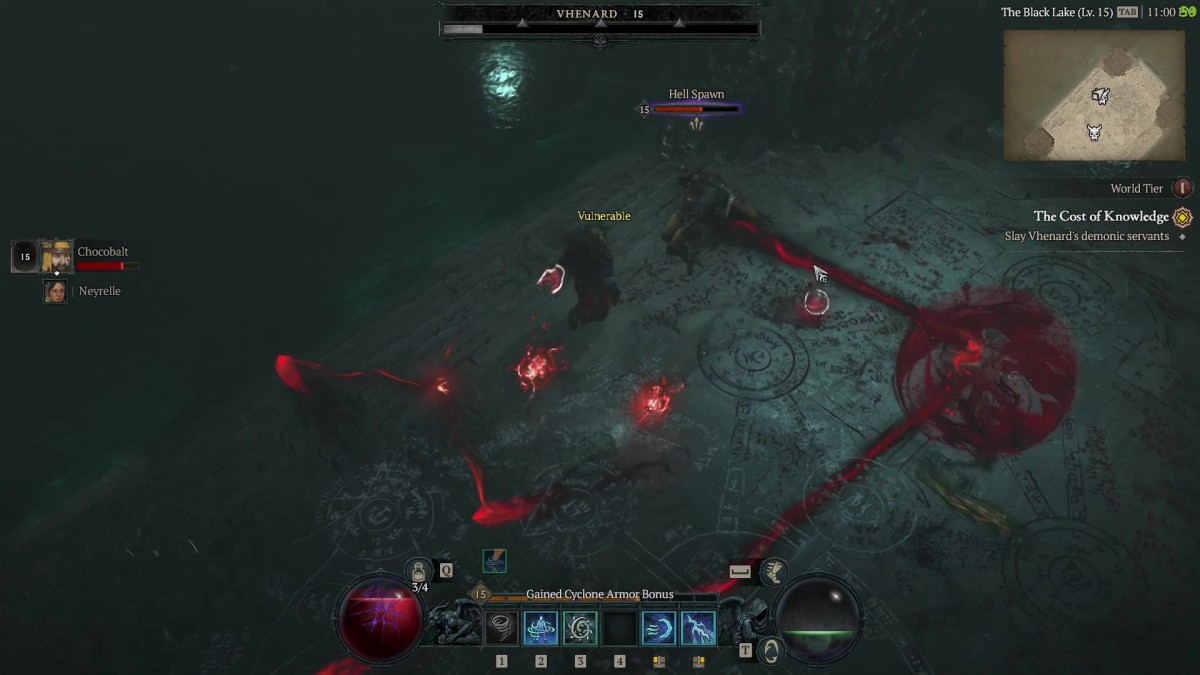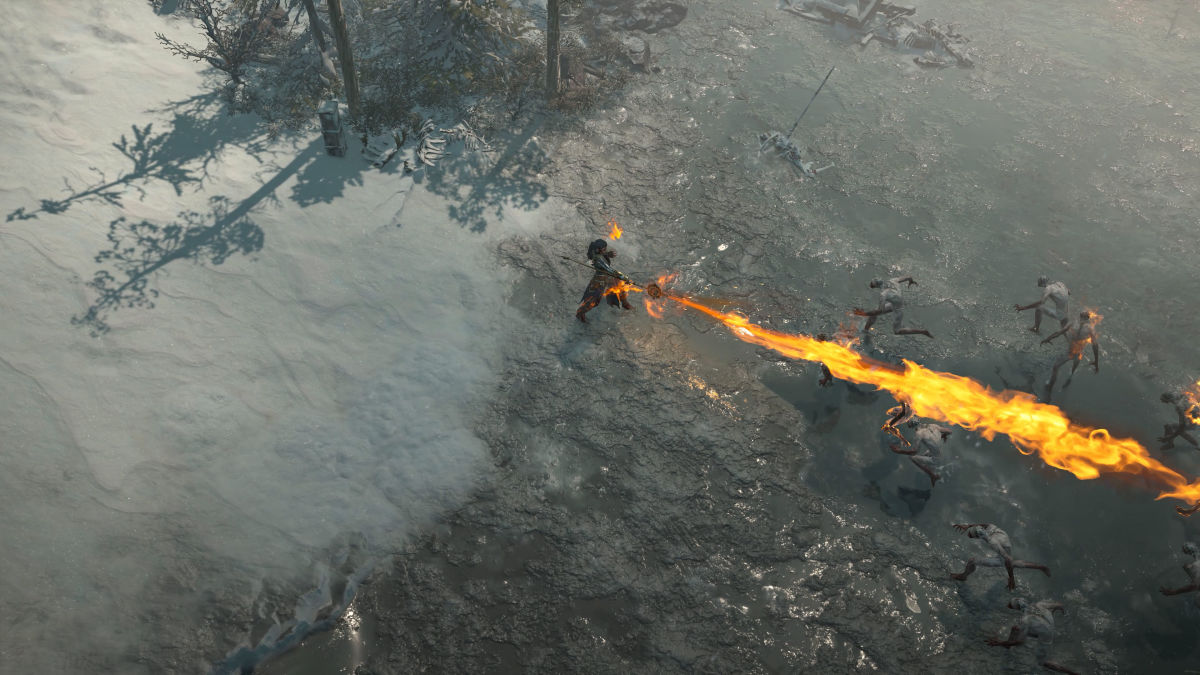"That's where darkness lives" - Diablo 4's art director on making darkness divine

“You start with grounded realism, and then you sprinkle in the Diablo.”
That’s how art director John Mueller describes the process of creating a world as massive and as artistically cohesive as Diablo 4. It’s a game that isn’t meant to look and feel like high fantasy, but rather a gothic epic ripped from the artworks of medieval times.
The Sanctuary of Diablo 4 is darker and more gruesome than any game in the series before it, and a huge step up tonally from Diablo 3, which was more cartoony and lighthearted. But it’s a world of two halves, of a lived-in, homely landscape atop a festering underworld where the monsters of hell are let loose.
“When you’re above ground, that’s where people live. The monsters are more like unwanted visitors. The above ground is Sanctuary, it’s the world you’re fighting for,” Mueller says, “When you go underground, all bets are off. When you go into a dungeon, that’s where darkness lives. It’s the history and the dirty kind of stuff, the eternal conflict.”

That identity — the world of humans trapped between the eternal conflict of heaven and hell — is at the core of the Diablo series. Mueller says that it goes back to classical paintings and tapestries, which depicted “demons and angels in heaven and hell, with humans tortured in the middle.”
One character stands as a bridge to those two worlds: Lilith, the Daughter of Hatred, and the main antagonist of Diablo 4. Unlike previous games’ big bads, Lilith isn’t some hulking, grotesque monolith. She’s a beautiful creature set firmly in the uncanny valley — almost human, but not quite. Almost demon, but not really. She’s the most complex villain the series has had to date, a rebel outcast even among demons who created Sanctuary as a place where the imperfect can thrive.
Despite that complexity in character, Mueller says it didn’t take long to settle on a design for Lilith.
“There’s things that seem really hard, that you think, ‘Oh, that must have taken a long time.’ But when we were designing Lilith, I think we had four drawings. It was so clear.”
Mueller and his team tried to avoid looking at past games for inspiration, instead wanting to create something fresh. They stayed away from photos and modern structures, and averted their eyes from the recent Diablo 2 Remastered, to avoid being swayed.
The result is a game that’s dark and gritty, like Diablo games before it, but one that has its own distinct visual identity. The team took care to make sure the dark tone was offset by moments of beauty in the world, sanding off edges that are a little too sharp to shine a light on what makes the darkness divine.
“A good landscape [in Diablo] should not be pretty, it should be engaging,” Mueller says, “One of my favorite spots is along the coast of Dry Steppes. I love the beaches, I love the palette, I love the tone of it. There’s these nice discoveries that happen as you travel around, but I wouldn’t say it’s pretty.”

This bold art direction is helped along by Mueller’s directing style, which he humbly describes as a role much more similar to an ideas facilitator rather than a director. He believes that an artist on his team is always going to be more excited by their own idea than his ideas.
“A lot of times the conversation is like, ‘Hey, you’re working on your thing, what are you excited about?’ And they say their thing, and I’ll pull something from the lore that could be related to this demon or another idea. There’s a term we use called plussing, where we take an idea and we just add onto it together, so we’re both geeking out and you have this person making it that’s just super engaged, super hyped.”
It shows in the end product. Every inch of environment in Diablo 4’s Sanctuary is lovingly crafted by people who are clearly passionate about the work they’re doing. Characters are well-developed, both from a design perspective and a narrative perspective, and it all comes together to form a polished, cohesive experience.
“I wanted this to be the pinnacle of my 30-year career. I think many of us that work on it, that’s how we feel. We want this to be our best work. We’re the lucky few who get to show up every day and say we’re working on Diablo 4.
“I think it’s really been the joy of my career.”
